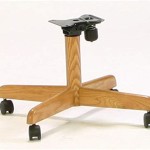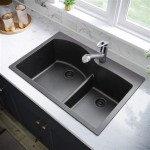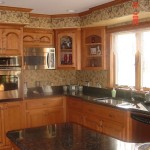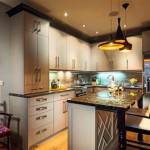Everything You Need to Know About Kitchen Plate Sets in Taiwan
Kitchen plate sets are essential components of any Taiwanese household, playing a crucial role in daily dining and culinary presentation. These sets, varying in material, design, and functionality, reflect both cultural preferences and modern lifestyle adaptations. Understanding the nuances of selecting the right plate set for a Taiwanese kitchen requires considering several key aspects, from traditional aesthetics to contemporary trends.
The market for kitchen plate sets in Taiwan is diverse, encompassing a wide range of products to cater to different tastes and budgets. From budget-friendly melamine options to high-end porcelain collections, consumers in Taiwan can find plate sets that match their specific needs and aesthetic preferences. This article provides a comprehensive overview of the key considerations involved in selecting kitchen plate sets in Taiwan, covering materials, styles, purchasing options, and cultural influences.
Key Considerations When Choosing Kitchen Plate Sets
Selecting the appropriate kitchen plate set involves several crucial considerations. These factors directly impact the set's durability, functionality, and aesthetic appeal. Ignoring these considerations can lead to dissatisfaction and the need for premature replacement.
The material of the plates is the first and paramount consideration. Different materials offer varying degrees of durability, heat resistance, and aesthetic appeal. Porcelain, stoneware, ceramic, melamine, and glass are common materials employed in the manufacture of plate sets in Taiwan.
Porcelain is prized for its elegance and durability. It is typically fired at high temperatures, resulting in a non-porous surface that is resistant to chipping and staining. Porcelain plate sets are often preferred for formal dining occasions. The higher price point, however, can make them less practical for everyday use for some households.
Stoneware is a more robust and less expensive alternative to porcelain. It offers good durability and heat resistance, making it suitable for both casual and formal dining settings. Stoneware plate sets often feature a more rustic aesthetic, which aligns with certain Taiwanese preferences for natural and understated designs.
Ceramic plate sets are widely available and offer a good balance of affordability and functionality. However, ceramic is generally more prone to chipping and cracking than porcelain or stoneware. Ensuring that the ceramic is lead-free and cadmium-free is a critical health consideration.
Melamine plate sets are a cost-effective and durable option, particularly popular for families with children or for outdoor dining. Melamine is resistant to breakage and scratching, making it a practical choice for everyday use. However, melamine is not microwave-safe and can leach chemicals at high temperatures, limiting its utility for certain cooking methods.
Glass plate sets are often chosen for their aesthetic appeal and versatility. They can be used for both hot and cold dishes and are generally dishwasher-safe. However, glass plates are susceptible to breakage if dropped or subjected to sudden temperature changes. Tempered glass options offer increased durability but still require careful handling.
The size and composition of the plate set are also important factors. Standard plate sets typically include dinner plates, salad plates, bowls, and occasionally mugs. The number of pieces in the set should correspond to the size of the household and the frequency of entertaining guests. In Taiwan, smaller sets are common for smaller families or individuals, while larger sets are preferred for families who regularly host gatherings.
Dinner plate sizes typically range from 10 to 12 inches in diameter, salad plates from 7 to 9 inches, and bowls from 5 to 7 inches. The depth of the bowls is also a key consideration, depending on the types of dishes that are frequently served. For example, deeper bowls are suitable for soups and noodles, while shallower bowls are better for rice and side dishes.
The style and design of the plate set should align with the overall aesthetic of the kitchen and dining area. Taiwanese consumers often favor plate sets that reflect traditional Chinese motifs, such as floral patterns, dragons, and phoenixes. Modern designs featuring clean lines and minimalist aesthetics are also gaining popularity, particularly among younger generations. Consider the existing dining table, linens, and other tableware when selecting a plate set to ensure a cohesive and harmonious look.
Traditional and Modern Design Influences
Taiwanese culture significantly influences the design and styles of kitchen plate sets available in the market. Traditional designs often incorporate symbolic elements that hold cultural significance. These elements reflect values such as prosperity, longevity, and harmony.
Floral patterns, particularly those featuring plum blossoms, orchids, bamboo, and chrysanthemums (the Four Gentlemen), are common in traditional Taiwanese plate sets. Each of these flowers carries a specific symbolic meaning. Plum blossoms symbolize resilience and perseverance, orchids represent elegance and refinement, bamboo signifies integrity and strength, and chrysanthemums embody longevity and joy.
Animal motifs, such as dragons and phoenixes, are also frequently featured in traditional plate designs. Dragons symbolize power, strength, and good fortune, while phoenixes represent rebirth, immortality, and grace. These motifs are often reserved for special occasions, such as weddings and Lunar New Year celebrations.
Color plays a crucial role in traditional Taiwanese aesthetics. Red is considered a lucky color and is often used in plate designs to symbolize prosperity and happiness. Gold is another auspicious color, representing wealth and abundance. Blue and green are associated with nature and tranquility, while white symbolizes purity and mourning.
Modern Taiwanese plate set designs often incorporate minimalist aesthetics and clean lines. These designs appeal to younger generations who prefer a more contemporary and understated look. Neutral colors, such as white, gray, and beige, are popular choices for modern plate sets.
Geometric patterns and abstract designs are also gaining popularity in modern Taiwanese plate sets. These designs offer a more versatile and adaptable aesthetic that can complement a wide range of kitchen and dining room styles. The influence of Scandinavian and Japanese design principles is evident in many modern Taiwanese plate sets, emphasizing simplicity, functionality, and natural materials.
The fusion of traditional and modern design elements is also a growing trend in the Taiwanese plate set market. These hybrid designs incorporate traditional motifs in a more subtle and contemporary manner. For example, a plate set might feature a stylized floral pattern in a muted color palette, blending traditional symbolism with modern aesthetics. This approach allows consumers to honor their cultural heritage while embracing contemporary design trends.
Purchasing Options and Maintenance
Kitchen plate sets can be purchased from various retailers in Taiwan, including department stores, specialty kitchenware stores, online marketplaces, and traditional markets. Each of these options offers its own advantages and disadvantages in terms of price, selection, and convenience.
Department stores typically offer a wide selection of plate sets from both local and international brands. They often provide a more curated shopping experience with knowledgeable staff who can assist customers in selecting the right set for their needs. However, prices in department stores tend to be higher than those in other retail channels.
Specialty kitchenware stores offer a more specialized selection of plate sets, focusing on high-quality materials and unique designs. These stores often carry brands that are not available in department stores or online marketplaces. The staff in specialty kitchenware stores are typically more knowledgeable about the technical aspects of plate set construction and can provide expert advice on maintenance and care.
Online marketplaces, such as Shopee, Lazada, and PChome, offer a vast selection of plate sets at competitive prices. Online shopping provides convenience and allows consumers to compare prices and read reviews from other customers. However, it is important to carefully review the product descriptions and images to ensure that the plate set meets the desired specifications and quality standards. Paying attention to seller ratings and return policies is also crucial when purchasing plate sets online.
Traditional markets often offer a more affordable option for purchasing plate sets, particularly for budget-conscious consumers. These markets typically sell a wide range of locally made plate sets at lower prices than those found in department stores or specialty kitchenware stores. However, the quality and durability of plate sets sold in traditional markets can vary, and it is important to carefully inspect the products before purchasing them.
Proper maintenance is essential for ensuring the longevity and aesthetic appeal of kitchen plate sets. Dishwashing and storage practices significantly impact the condition of the plates over time. Handwashing is generally recommended for delicate plate sets, such as those made of fine porcelain or crystal. Harsh detergents and abrasive scrubbers should be avoided to prevent scratching or damage to the surface. When using a dishwasher, select a gentle cycle and avoid overcrowding the racks to minimize the risk of chipping or breakage.
Proper storage is also crucial for preserving the condition of plate sets. Plates should be stacked carefully to prevent scratching or chipping. Using plate protectors or felt pads between plates can help to cushion them and prevent damage. Storing plates in a dry and well-ventilated area can also help to prevent the growth of mold or mildew.
Regular cleaning and maintenance can help to remove stains and prevent discoloration. For stubborn stains, a mild solution of baking soda and water can be used to gently scrub the affected area. Avoid using harsh chemicals or abrasive cleaners, as these can damage the surface of the plates. With proper care and maintenance, kitchen plate sets can provide years of enjoyment and enhance the dining experience in Taiwanese households.

Serving Up The Past Taiwan Bowl And Dish Museum Panorama

Tatung Taiwan Durable China 6 Piece Dinner Set

Norleans Taiwan Republic Of China Imari Dinner Set

Dinnerware Anthropologie Taiwan Women S Clothing Accessories Home

1960s Taiwan Tatung Set Of 8 Porcelain Dinner Plates Hand Painted Mid Century
Red Wan Shou Wu Jiang Tatong Porcelain Dinner Set 54 Pcs Made In Taiwan
Dinnerware Sets Costco

Vintage Taiwan Stoneware Set Of Condiment Dishes Oil And Vinegar Pitchers Double Sided Dish Salt Pepper Toothpick Holder

Buy Sage Green Logan Reactive Glaze Set Of 4 Dinner Plates From Next Taiwan

Tatung Taiwan Durable China 6 Piece Dinner Set
Related Posts








